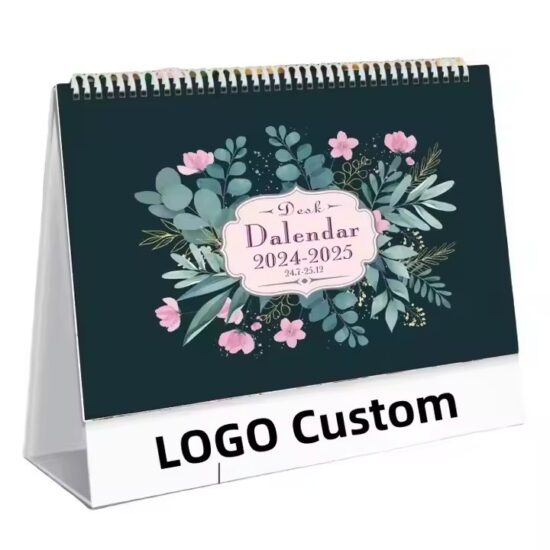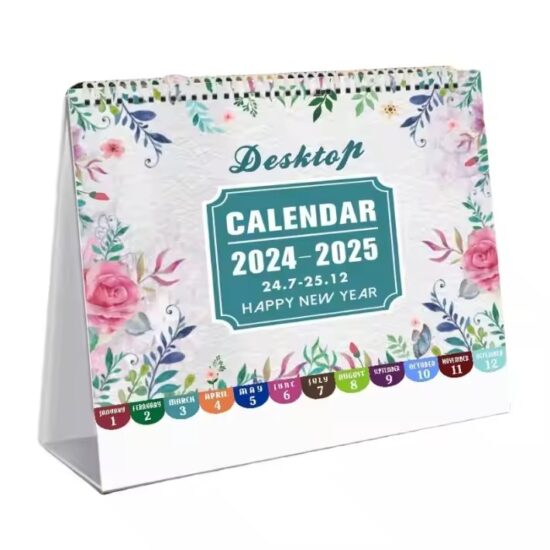bob@nbdho.com
Hardcover vs. Softcover Desk Calendars: Key Differences and Benefits Explained
📚 Hardcover vs. Softcover Desk Calendars: Key Differences and Benefits Explained
When designing or sourcing desk calendars, one key decision you’ll face is choosing between hardcover and softcover formats. Each option offers unique advantages depending on your purpose—whether it’s corporate gifting, retail sales, or mass promotional campaigns.
This guide compares the two styles across several dimensions to help you choose the best fit for your calendar product line or brand.
🧱 1. What Is a Hardcover Desk Calendar?
Hardcover calendars feature a rigid, durable cover—often made from thick cardboard (around 1200–1500gsm) wrapped in art paper or special textures like linen or leatherette. They typically convey a premium, long-lasting feel.
Best For:
-
Executive gifts
-
Premium corporate branding
-
Luxury product lines
-
Long-term use environments (e.g., office desks)
Key Benefits:
-
Excellent durability
-
High perceived value
-
Ideal for embossing, foil stamping, and special finishes
-
Stands up well to daily use
🧾 2. What Is a Softcover Desk Calendar?
Softcover calendars are made from lightweight card stock or flexible paper covers, usually 200–350gsm in thickness. They’re more affordable and easier to handle, especially for high-volume distribution.
Best For:
-
Budget-conscious promotional campaigns
-
Mail-friendly formats
-
Trade show giveaways
-
Students and general users
Key Benefits:
-
Lower production and shipping costs
-
Lightweight and portable
-
More flexible for creative shapes or folding
-
Faster production time
📊 3. Comparison Table: Hardcover vs. Softcover
| Feature | Hardcover Desk Calendar | Softcover Desk Calendar |
|---|---|---|
| Durability | ⭐⭐⭐⭐⭐ Excellent | ⭐⭐ Moderate |
| Cost | 💰💰💰 Higher | 💰 Economical |
| Perceived Value | ⭐⭐⭐⭐⭐ Premium appeal | ⭐⭐ Basic |
| Branding Options | Embossing, foil, UV, fabric covers | Full-color print, lamination |
| Target Audience | Executives, B2B clients | General customers, mass markets |
| Shipping Weight | Heavier | Lightweight |
| Best Use Case | Gifts, long-term display | Promotions, events, short-term planning |
🎯 4. Choosing the Right Option Based on Purpose
✔️ Go with Hardcover if you need:
-
A high-end gift for clients or employees
-
A durable calendar that will sit prominently on desks all year
-
A branded item that reflects premium positioning
✔️ Choose Softcover if you need:
-
To print and distribute thousands for a campaign
-
Something lightweight for mailing or packaging inserts
-
A budget-friendly solution with shorter usage duration
💡 5. Design Considerations
| Design Element | Hardcover | Softcover |
|---|---|---|
| Binding | Wire-O or spiral, often with reinforced spine | Wire-O or saddle-stitched |
| Finishing Touches | Lamination, debossing, textured wraps | UV coating, gloss/matte lamination |
| Base Options | Thick, rigid base (e.g., greyboard stand) | Foldable or glued triangle base |
✅ Pro Tip: Combine a softcover interior with a hardcover base for a hybrid solution that balances budget and sturdiness.
🧠 Final Thoughts
The choice between hardcover and softcover desk calendars depends on your audience, goals, and budget. Hardcover options elevate your brand image and provide a premium unboxing experience, while softcover calendars are ideal for high-impact, wide-reach marketing.
As a calendar manufacturer or reseller, offering both types—or customizable upgrades—can meet diverse customer needs and increase sales conversions.

